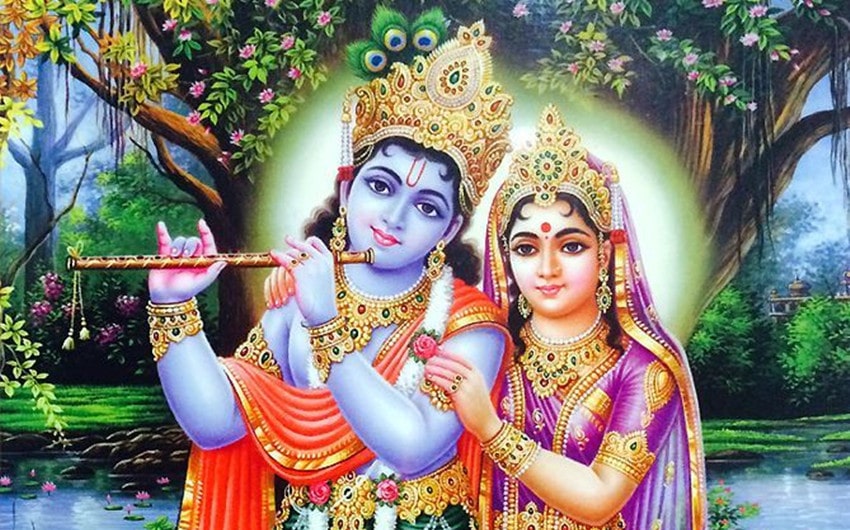Lord Krishna’s Wives: Exploring the Ashtabharya and Beyond
You may know Lord Krishna as the flute-playing deity, the charioteer of Arjuna, or the charismatic avatar of Vishnu who reshaped dharma and destiny in the Indian epic Mahabharata. But if you’ve ever wondered about his personal life—especially his romantic and matrimonial relationships—you’re not alone. The question of “Who were Lord Krishna’s wives?” invites a fascinating journey through mythology, symbolism, and spiritual philosophy.
Lord Krishna was no ordinary figure. Beyond his divine teachings and epic victories, his marriages were layered with cultural, spiritual, and emotional significance. To understand his wives is to gain a richer insight into his role as both a divine entity and a relatable human being.
What Does It Mean That Krishna Had Multiple Wives?
If you’re approaching this from a modern perspective, Krishna’s multiple marriages might raise questions. Why did he have so many wives? Was it out of duty, desire, or something deeper? In Hindu philosophy, Krishna’s marriages were not mere social contracts—they reflected his cosmic roles and the multifaceted expressions of love, duty, and compassion.
There are two primary categories of Krishna’s consorts: the Ashtabharya, his eight principal wives, and the 16,100 women he married later as an act of restoration and protection. Each of these relationships carries meaning beyond the literal, speaking to the divine’s relationship with the human soul and the layers of dharma Krishna embodied.
The Ashtabharya: The Eight Principal Wives of Krishna
Krishna’s eight chief queens—known collectively as the Ashtabharya—were not just his spouses but symbolic archetypes. Each queen represents a specific virtue, spiritual quality, or philosophical idea. They are often described in various Puranas, especially the Bhagavata Purana and Vishnu Purana. Here’s a closer look at each one:
- Rukmini: The first and most prominent of Krishna’s wives, Rukmini was the princess of Vidarbha and considered an incarnation of Goddess Lakshmi. She wrote a heartfelt letter to Krishna asking him to rescue her from a forced marriage. Krishna honored her plea, abducted her with consent, and married her. Their relationship symbolizes ideal devotion, spiritual surrender, and divine love.
- Satyabhama: The daughter of Satrajit, she is known for her pride and fiery personality. She once insisted that Krishna weigh himself against her wealth in gold to prove his love—only to be humbled when a single tulsi leaf offered with devotion outweighed all her riches. Satyabhama represents ego transformed through bhakti (devotion).
- Jambavati: She was the daughter of Jambavan, the bear-king who had fought alongside Rama. Krishna married her after a confrontation involving the Syamantaka jewel. Their story is one of reconciliation and karma fulfillment, as it links Krishna to his former avatar, Rama.
- Kalindi: Kalindi was the daughter of the sun god, Surya, and was found meditating and awaiting Krishna by the Yamuna River. Her unwavering focus and determination to marry him reflect the soul’s yearning for divine union.
- Nagnajiti (also known as Satya): Daughter of King Nagnajit of Kosala, Krishna won her hand by taming seven raging bulls. This feat, mentioned in the Bhagavata Purana, reveals Krishna’s willingness to prove his love through heroic acts and Satya’s devotion to virtue.
- Mitravinda: A princess of Avanti and cousin of Krishna, Mitravinda defied her brothers’ political alliances and chose Krishna during her Swayamvara. Her courage represents autonomy in love and the soul’s bold decision to unite with God despite worldly resistance.
- Bhadra: A royal of the Kekaya kingdom and Krishna’s cousin, Bhadra’s marriage to him was arranged by mutual consent. She represents familial harmony and the merging of divine bloodlines.
- Lakshmana (also called Madri): Known for her unmatched beauty, she chose Krishna in a contest of archery. Their bond emphasizes Krishna’s qualities as a skilled warrior and desirable consort.
The Story of the 16,100 Rescued Women
One of the most often misunderstood yet deeply significant parts of Krishna’s life is his marriage to 16,100 women who had been imprisoned by the demon king Narakasura. After vanquishing Narakasura, Krishna rescued these women, but society rejected them as defiled.
To protect their honor and reintegrate them into society with dignity, Krishna symbolically married them all. These were not conjugal marriages in a worldly sense but an act of supreme compassion. You can think of it as Krishna lifting them from shame and bestowing upon them spiritual equality and social respect.
Each of these women represents souls seeking redemption. Krishna’s acceptance of them exemplifies the divine’s inclusive nature—there is no soul unworthy of salvation, no person unfit for grace. This narrative beautifully echoes themes of forgiveness, renewal, and spiritual equality.
Krishna and Radha: Was She His Wife?
No exploration of Krishna’s love life is complete without addressing Radha. Often seen as Krishna’s greatest devotee and soul companion, Radha’s relationship with Krishna transcends social labels. In most scriptures, Radha is not described as his wife but as his eternal beloved.
Their bond represents parakiya rasa—the most intimate, spiritual form of love where ego dissolves entirely. If you see Radha and Krishna’s story not as a literal romance but as a metaphor for the soul’s longing for the divine, you begin to grasp its true depth.
Symbolism and Lessons from Krishna’s Wives
Krishna’s many relationships were never about indulgence or royalty alone—they reflected his role as a cosmic being who engaged with different aspects of life for the benefit of humanity. Here are a few takeaways:
- Devotion is multifaceted: Rukmini’s silent longing, Satyabhama’s pride, and Kalindi’s meditation all reflect different ways to connect with the divine.
- Dignity is universal: Krishna’s marriage to the rescued women shows that no one is beyond redemption.
- Spiritual love transcends convention: The story of Radha and Krishna reminds you that divine love is boundless and often beyond human understanding.
Conclusion: More Than Marriages—A Tapestry of Spiritual Insight
Understanding Lord Krishna’s wives isn’t just about listing names or recounting ancient tales. It’s about seeing the divine embrace of love, redemption, and human emotion. Each wife in Krishna’s life was part of a larger story—a narrative that teaches you about surrender, devotion, courage, and compassion.
So when you ask, “Who was Krishna’s wife?” the answer is far from simple. He had many, each serving a unique role, and all symbolizing deeper spiritual truths. In their stories, you don’t just discover Krishna—you discover yourself.
Featured image source: Pinterest







